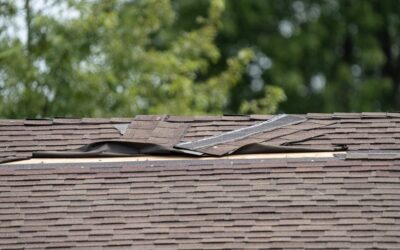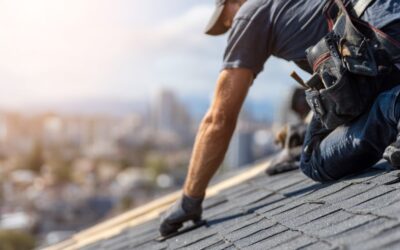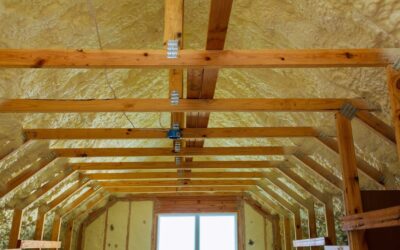The Complete Guide to Tin Roof Repair: Protecting and Extending Your Roof’s Life
Tin roofs have been a popular choice for homes, barns, and commercial buildings for decades, thanks to their durability, classic appearance, and long lifespan. However, like all roofing materials, tin roofs require proper maintenance and timely repairs to ensure they continue protecting your property. Whether you’re a homeowner, business owner, or property manager, understanding tin roof repair is crucial to preserving your investment.
In this comprehensive guide, we’ll explore everything you need to know about tin roof repair, including common problems, repair methods, maintenance tips, costs, and how to choose the right roofing contractor.
What Is a Tin Roof?
A tin roof is a type of metal roofing, typically made from steel or aluminum coated with a layer of tin or other protective materials. Despite the name, many “tin roofs” today are made from galvanized steel or other alloys designed to resist rust and corrosion. Tin roofs are known for their:
- Longevity (often lasting 40–70 years)
- Resistance to fire and pests
- Low maintenance requirements
- Classic, timeless aesthetic
Because of these benefits, tin roofs are commonly found on:
- Residential homes in rural or historic areas
- Barns and agricultural buildings
- Industrial and commercial properties
- Historic restoration projects
Despite their strength, tin roofs are not immune to wear and tear. Environmental factors, aging, and lack of maintenance can lead to damage that requires tin roof repair.
Common Issues That Require Tin Roof Repair
Understanding the most common problems with tin roofs helps property owners detect issues early and prevent costly damage.
1. Rust and Corrosion
Even though tin roofs are coated to resist rust, prolonged exposure to moisture, salt, or harsh chemicals can lead to corrosion. Rust weakens the metal, making it prone to holes and leaks.
2. Loose or Missing Fasteners
Tin roofs are typically secured with screws or nails that can loosen over time due to expansion, contraction, or high winds. Loose fasteners can cause panels to shift, leading to leaks or structural damage.
3. Leaks and Water Damage
Leaks are a common issue in older or improperly installed tin roofs. Water can enter through:
- Rusted areas
- Seams and joints
- Around fasteners
- Damaged flashing
4. Punctures and Holes
Falling debris, hail, or foot traffic can puncture tin panels, creating holes that allow water to penetrate the roof deck.
5. Panel Warping or Buckling
Temperature fluctuations can cause metal panels to expand and contract. Over time, this can lead to warping or buckling, affecting the roof’s appearance and performance.
6. Sealant and Flashing Deterioration
Sealants and flashing around chimneys, vents, skylights, and other roof penetrations can degrade, leading to water infiltration and roof damage.
Benefits of Repairing a Tin Roof
Investing in timely tin roof repair provides several benefits:
1. Cost Savings
Repairing small issues is far less expensive than replacing the entire roof. Routine maintenance and minor repairs can save thousands of dollars in long-term costs.
2. Extends Roof Life
Regular repairs prevent minor problems from escalating, helping your tin roof reach its maximum lifespan of 40–70 years.
3. Prevents Structural Damage
Leaks and water intrusion can damage the roof deck, insulation, and interior structures. Timely repairs protect your home or building from more extensive structural issues.
4. Improves Energy Efficiency
A well-maintained tin roof reflects heat and prevents energy loss, keeping your property cooler in the summer and warmer in the winter.
5. Enhances Curb Appeal
Repairing damaged panels, rust spots, and sealant areas restores the roof’s appearance, improving overall property aesthetics.
DIY vs. Professional Tin Roof Repair
Some homeowners attempt DIY tin roof repair, but it’s important to weigh the pros and cons before deciding:
DIY Tin Roof Repair
Pros:
- Lower immediate cost
- Quick fixes for minor issues
- Convenience
Cons:
- Limited expertise in metal roofing
- Safety risks from working at heights
- Potential for improper repairs leading to leaks
- May void roof warranties
Professional Tin Roof Repair
Pros:
- Experienced contractors know common issues and proper techniques
- Safe handling of roofing materials
- Access to specialized tools and materials
- Long-term solutions and warranty protection
Cons:
- Higher upfront cost
- Scheduling may require waiting for availability
For most tin roof repairs, hiring a professional roofing contractor ensures the repair is done safely and correctly, protecting your investment in the long run.
Tin Roof Repair Methods
The specific repair method depends on the type and extent of damage. Common tin roof repair techniques include:
1. Rust Removal and Panel Coating
For minor rust spots:
- Clean the affected area
- Apply rust-inhibiting primer
- Paint or coat the panel to prevent further corrosion
2. Fastener Replacement
Loose or missing screws or nails can be replaced with:
- Metal screws with rubber washers for a watertight seal
- Specialty fasteners designed for tin roofing
3. Patching Holes and Leaks
Small holes or punctures can be patched using:
- Metal roofing patch kits
- Roofing sealants designed for metal surfaces
- Adhesive-backed metal patches for larger holes
4. Panel Replacement
Severely damaged, warped, or rusted panels may require full replacement. The new panel is:
- Cut to size
- Properly aligned and secured
- Sealed at seams and fasteners
5. Flashing and Sealant Repair
Deteriorated flashing and sealant can be repaired or replaced to prevent water infiltration. High-quality silicone or polyurethane sealants are commonly used.
6. Roof Coating
Applying a reflective roof coating can:
- Protect against UV damage
- Extend roof lifespan
- Improve energy efficiency
- Provide a seamless seal over minor cracks or gaps
How to Inspect a Tin Roof for Damage
Regular inspections are critical for maintaining a tin roof. Here’s how to perform a basic inspection:
- Visual Exterior Inspection: Look for rust, loose panels, punctures, and debris.
- Check Fasteners: Inspect screws and nails for tightness and signs of corrosion.
- Examine Flashing and Sealants: Check areas around vents, chimneys, and skylights.
- Inspect for Leaks: Look for water stains inside the building or damp insulation.
- Check for Panel Warping: Ensure metal sheets are lying flat without buckling.
While DIY inspections are useful, professional roofing contractors can perform thorough assessments and detect hidden issues with specialized tools.
Tin Roof Maintenance Tips
Preventive maintenance reduces the need for extensive repairs. Consider these tips:
- Clean Debris Regularly: Remove leaves, branches, and dirt to prevent water pooling and rust formation.
- Trim Overhanging Branches: Prevent branches from scraping or puncturing the roof.
- Check Fasteners Annually: Tighten or replace loose screws or nails.
- Inspect After Storms: Look for damage caused by hail, wind, or falling debris.
- Apply Protective Coatings: Periodically coat the roof with metal roof paint or reflective coatings to prevent rust and UV damage.
- Monitor Attic and Interior: Watch for signs of leaks or water damage inside the building.
Costs of Tin Roof Repair
The cost of tin roof repair depends on the size of the roof, extent of damage, and materials used. Typical repair costs include:
- Minor Rust Treatment or Small Patch: $100–$300
- Fastener Replacement or Sealant Repair: $150–$500
- Panel Replacement (per panel): $200–$600
- Large-Scale Repairs or Extensive Damage: $1,000–$5,000+
While repair costs vary, addressing issues promptly is much more affordable than full roof replacement, which can cost $7,000–$20,000+ for residential properties.
Signs You May Need a Full Tin Roof Replacement
Not all tin roof problems can be repaired. Consider replacement if you notice:
- Extensive rust and corrosion across multiple panels
- Large areas of warping, buckling, or holes
- Persistent leaks despite multiple repairs
- Age of the roof exceeding 40–50 years
- Structural damage to roof decking
A professional roofing contractor can help you determine whether repair or replacement is the most cost-effective solution.
Choosing the Right Tin Roof Repair Contractor
Hiring an experienced and reputable contractor is essential for quality repairs. Look for the following:
- Licensing and Insurance: Ensure the contractor is licensed and carries liability insurance.
- Experience with Metal Roofs: Contractors experienced with tin or metal roofing understand specific repair techniques.
- References and Reviews: Check client testimonials and past project photos.
- Warranty: A professional contractor should provide a warranty on materials and labor.
- Clear Estimates: Transparent pricing with a detailed breakdown of labor, materials, and potential additional costs.
DIY Safety Tips for Tin Roof Repairs
If you attempt minor repairs yourself, prioritize safety:
- Wear non-slip shoes and safety harnesses when on the roof.
- Avoid walking on wet or
 (440) 307-2060
(440) 307-2060




